This time last year, the Denver Post collected a series of color images taken during the D-Day landings that occured 71 years ago today. Some of the images are reproduced below, but our readers are strongly urged to click through and take a look at every one:
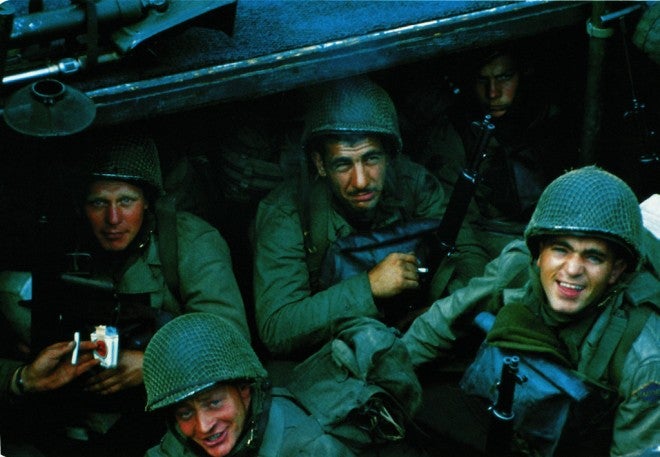
Original caption: “United States Rangers from E Company, 5th Ranger Battalion, on board a landing craft assault vessel (LCA) in Weymouth harbor, Dorset, on June 4, 1944. The ship is bound for the D-Day landing on Omaha Beach in Normandy. Clockwise, from far left: First Sergeant Sandy Martin, who was killed during the landing, Technician Fifth Grade Joseph Markovich, Corporal John Loshiavo and Private First Class Frank E. Lockwood. They are holding a 60mm mortar, a Bazooka, a Garand rifle and a pack of Lucky Strike cigarettes. (Photo by Galerie Bilderwelt/Getty Images)”
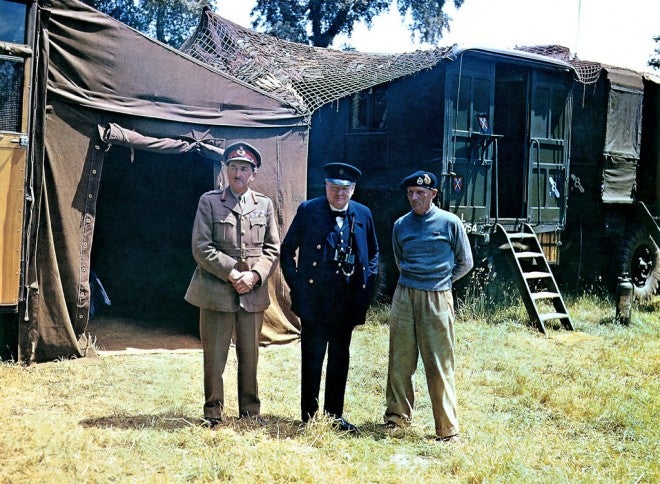
Original caption: “From left, Chief of the Imperial General Staff Field Marshal Sir Alan Brooke, British Prime Minister Winston Churchill and commander of the 21st Army Group, Field Marshal Bernard Montgomery in Normandy on June 12, 1944, six days after the D-Day landings during Operation Overlord Normandy in World War II. (Photo by Galerie Bilderwelt/Getty Images)”
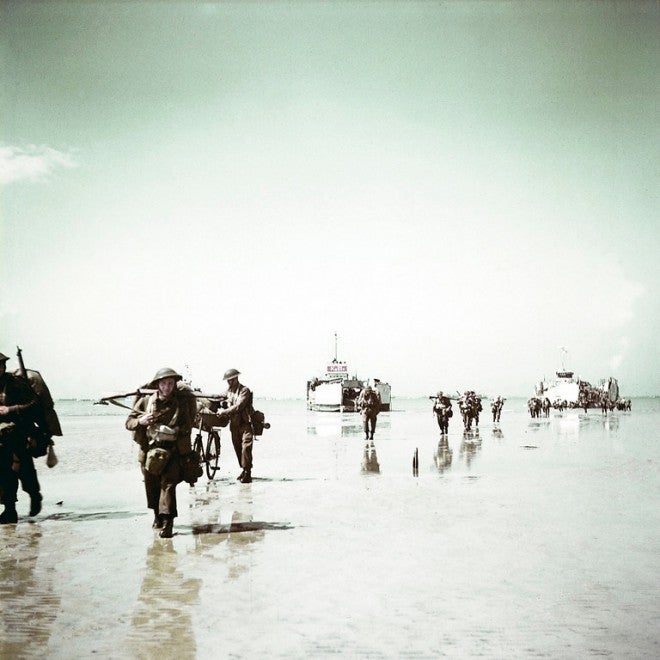
Original caption: “Troops from the 3rd Canadian Infantry Division landing at Juno Beach on the outskirts of Bernieres-sur-Mer on D-Day, June 6, 1944. 14,000 Canadian soldiers were put ashore and 340 lost their lives in the battles for the beachhead. (Photo by Galerie Bilderwelt/Getty Images)” The Canadian troops are armed with the improved No. 4 Mk. I rifles, a development of the famous SMLE.
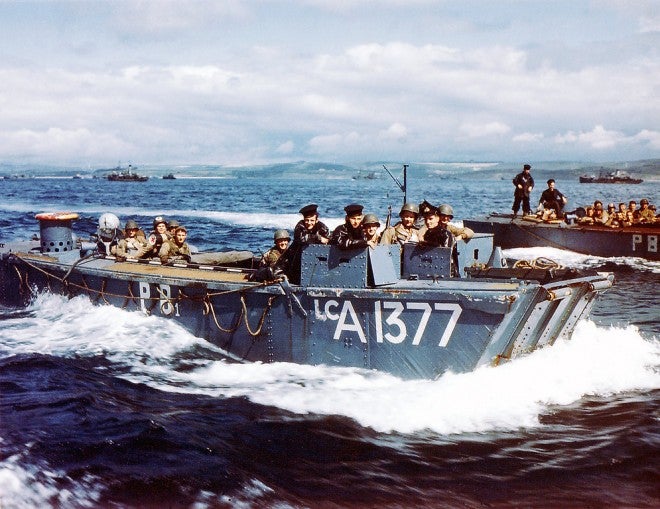
Original caption: “British Navy Landing Crafts (LCA-1377) carry United States Army Rangers to a ship near Weymouth in Southern England on June 1, 1944. British soldiers can be seen in the conning station. For safety measures, U.S. Rangers remained consigned on board English ships for five days prior to the invasion of Normandy, France. (Photo by Galerie Bilderwelt/Getty Images)” Visible are the muzzles of both an M1 Carbine and M1 Garand rifle.
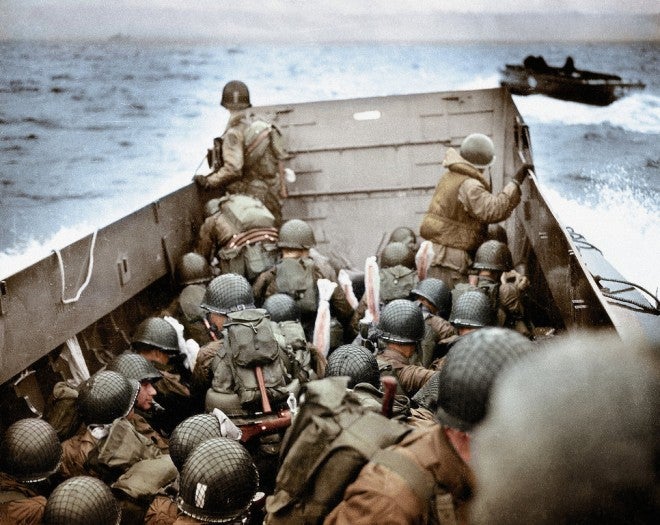
Original caption: “Some of the first American soldiers to attack the German defenses in Higgins Boats (LCVPs) approach Omaha Beach near Normandy, France on June 6, 1944. Plastic covers protect the soldier’s weapons against from the water. (Photo by Robert F. Sargent, U.S. Coast Guard/Galerie Bilderwelt/Getty Images)” The M1 Garand was found to be sensitive to sand and salt spray in the extremely harsh USMC San Diego tests of late 1940. The plastic weapon covers used in the D-Day invasion protected the action from spray and sand ingress, greatly reducing the weapon’s chance of failure during the landings.
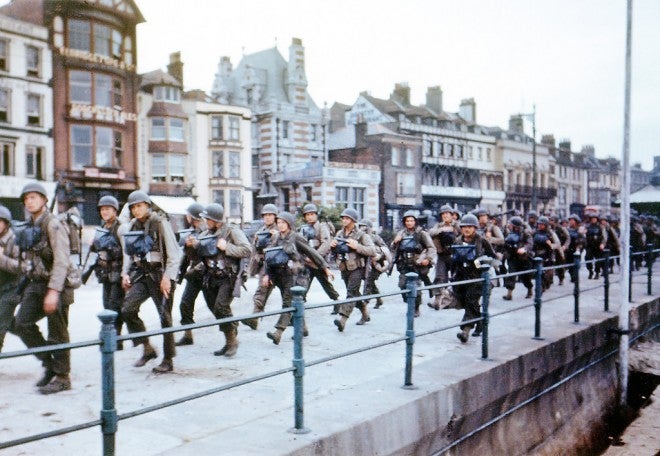
Original caption: “U.S. troops on the Esplanade at Weymouth, Dorset, on their way to ships bound for Omaha Beach for the D-Day landings in Normandy in June of 1944. (Photo by Galerie Bilderwelt/Getty Images)”
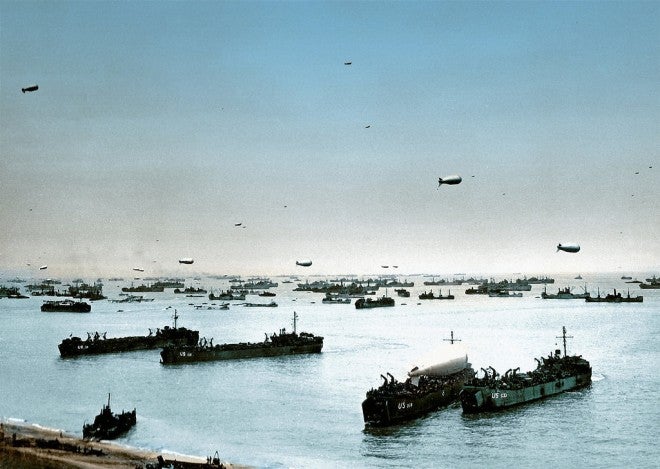
Original caption: “Allied ships, boats and barrage balloons off Omaha Beach after the successful D-Day invasion, near Colleville-sur-Mer, Normandy, France on June 9, 1944. (Photo by Galerie Bilderwelt/Getty Images)”
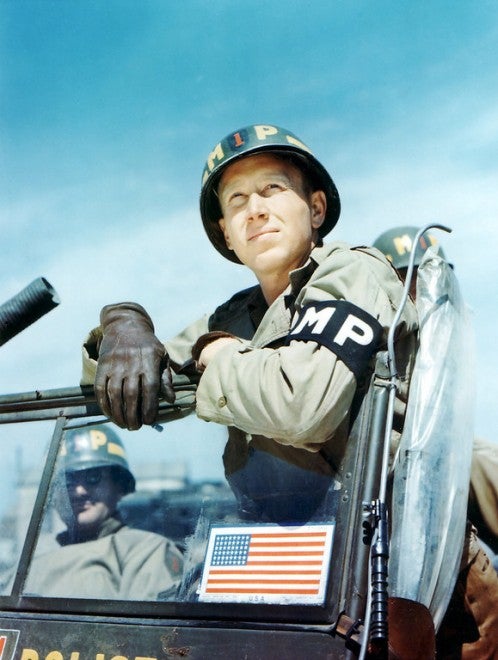
Original caption: “Private Clyde Peacock, 1st Military Police (MP) Platoon of the 1st Infantry Division of the United States Army in June 1944 in Dorset, United Kingdom. The 1st Division was one of the two divisions that stormed Omaha Beach on D-Day suffering high casualties. (Photo by Galerie Bilderwelt/Getty Images)” An M1 with its plastic cover is retained in a scabbard attached to the windscreen of the Truck, 1/4 Ton, 4×4, better known as a Willys MB Jeep. Also visible is the M7 Grenade Launcher attachment for the M1 rifle.
The success landings spelled the end of Nazi Germany, and the beginning of the liberation of Western Europe. In concert with the Soviet Union, the Western Allies took the fight to Germany, eventually forcing the collapse of Adolf Hitler’s regime on April 30, 1945, and the capitulation and unconditional surrender of Nazi Germany 8 days later, on May 8, 1945.
 Your Privacy Choices
Your Privacy Choices